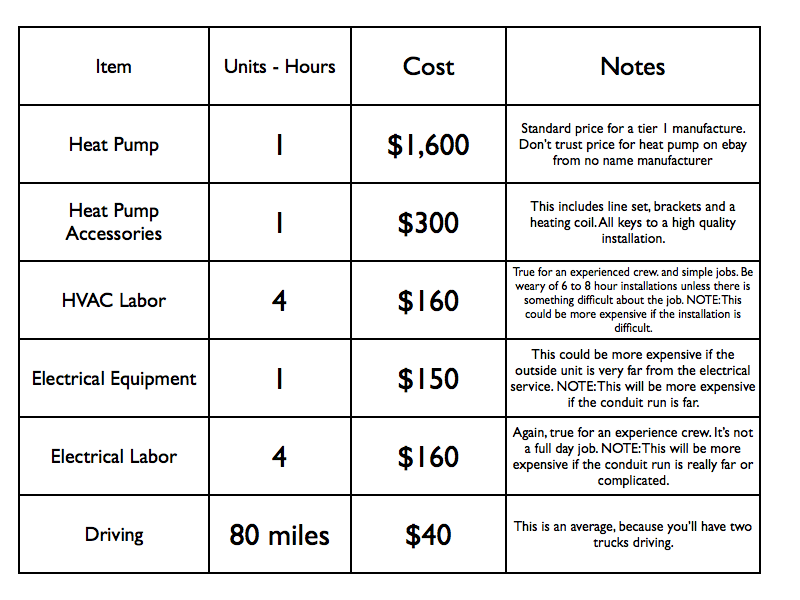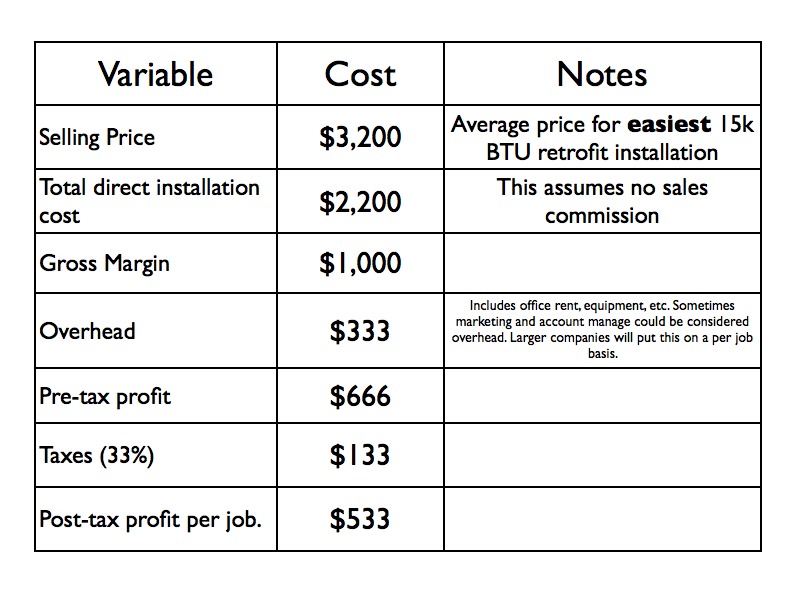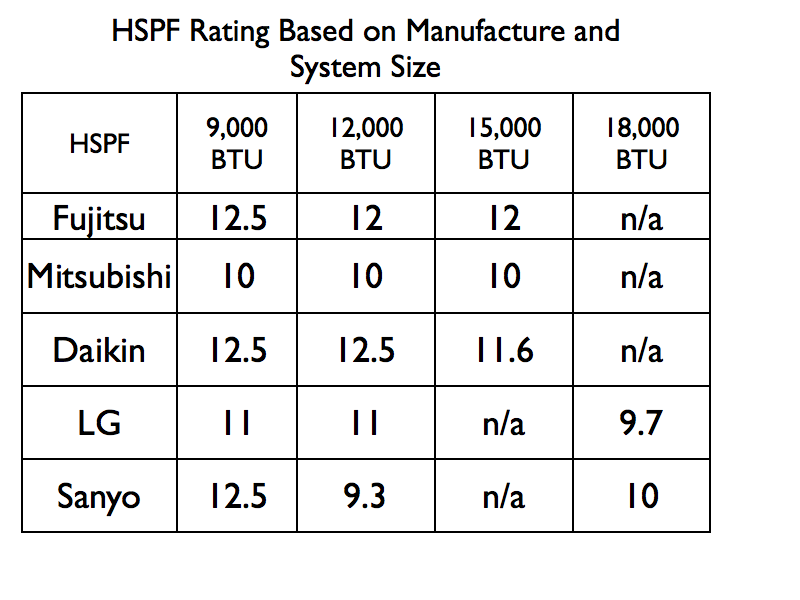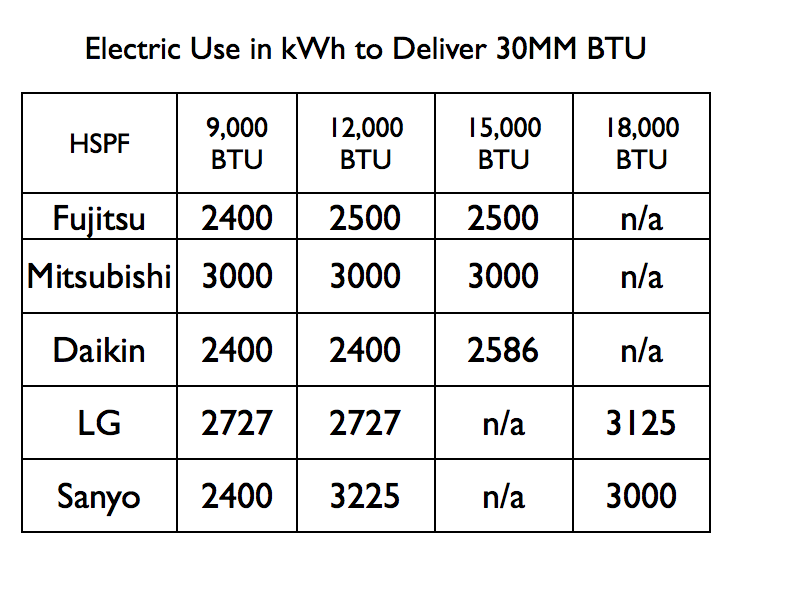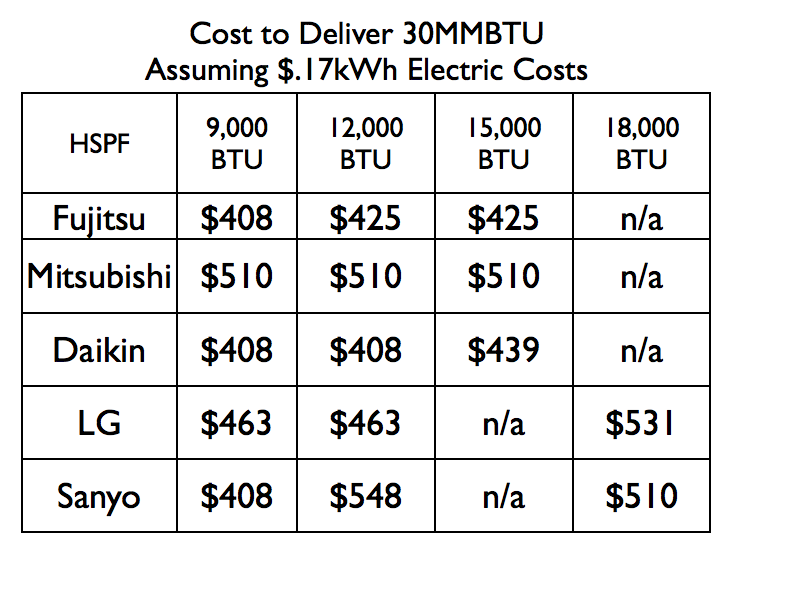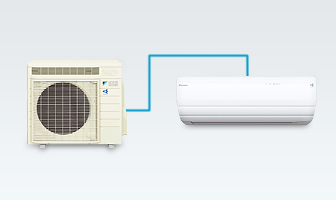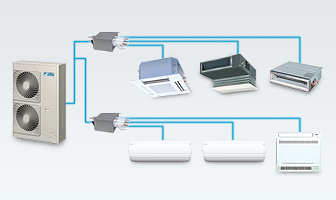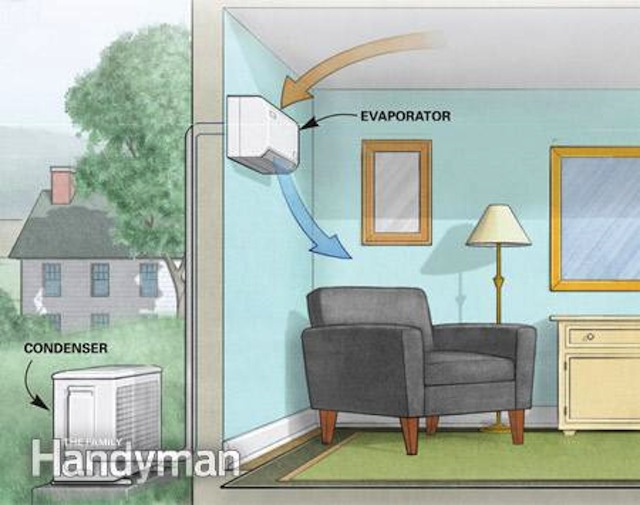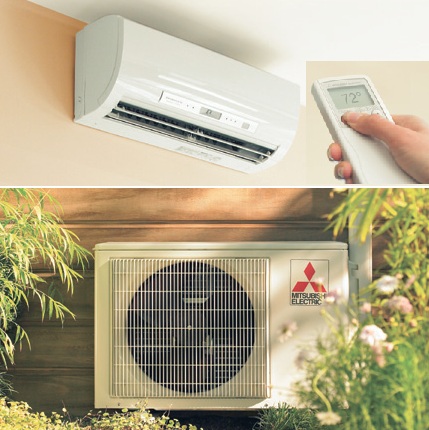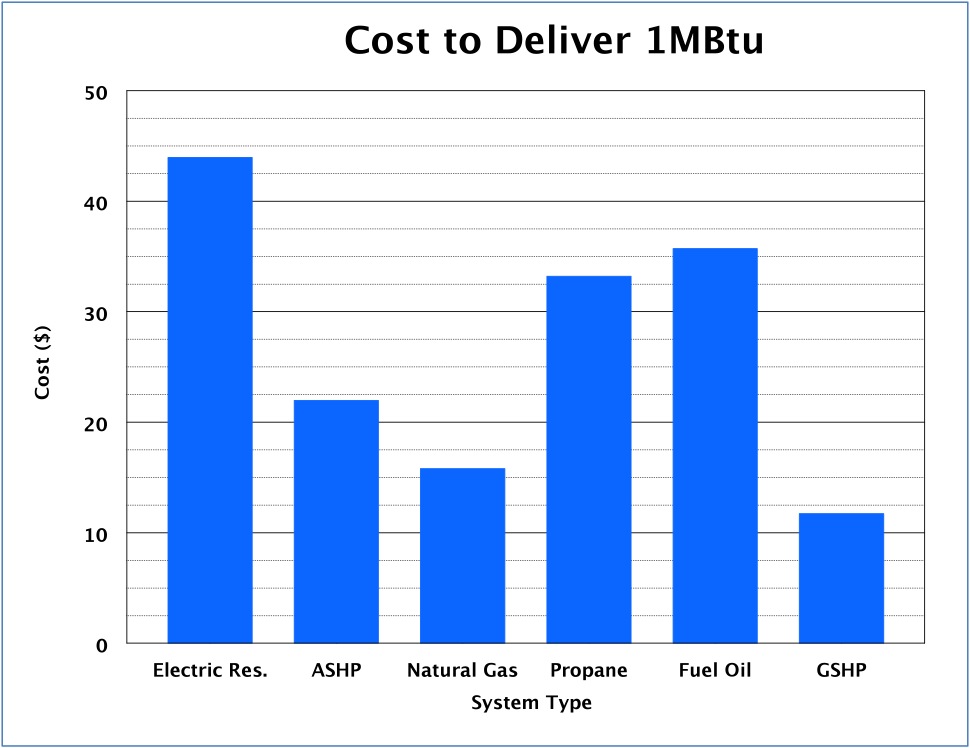If you're looking to get a heat pump in Maine installed, don't go with the lowest cost ductless heat pump. If you go with the lowest cost provider, you're likely not getting a good deal but you're getting a bad performing system. The reason for this is simple. While you can understand who makes the best heat pump, the installation can have a large impact on performance than a specific manufacturer.
In this article, we'll discuss the things you need to ask any contractor that is installing a new heat pump system in your home to give you the best chance of getting a high quality installation. There are a few issues that will impact the system right away and these are easier to catch. There are a few common issues that will only impact the performance and durability of the equipment years after it is installed. These are harder to catch. For each issue, we'll provide a "fix", which are questions to ask your installer before the installation is made.
In the past, we discussed the cost of a ductless heat pump in Maine for a contractor to install a unit. This analysis included equipment costs, labor amount and costs, contractor profit, and overhead. Here's the thing, if a contractor goes below this amount, it's not because they're awesome, it's because they're cutting corners or they're not making an acceptable gross margin. Both are indications of a poorly managed firm that is not organized, not a firm that's giving you a great deal.
In case it's not obvious, you don't want to work with a poorly managed firm.
I have this conversation with Vaughan Woodruff from Insource Renewables. Vaughan has inspected hundreds of systems across Maine and I respect his opinion on this.
We talk about items that most commonly go wrong with a heat pump installation and what you need to ask from your installer before the installation so vet them correctly. This article is part of our free cold climate heat pump buyers guide that you can download.
The key is getting a system that will operate really well for the next 15 years. Make sure you read this and double check your installation to see that these are done correctly.
Visible Problems that Can Go Wrong
Issue One - Wall Mounting and Unit Placement Within the Home
There are two ways that the units create noise, both of which need to managed correctly. The first is that the fan makes noise. The units make a little less noise than a normal window hung A/C unit. This cannot be eliminated, so it's important to consider this when placing the unit.
The second way that a unit can make noise is bad installation of hanging the unit on the wall. Sometimes installers will not hang the inside unit on the studs within a wall, but simply attach it to the sheathing. This is bad!
THE FIX: Make sure you place the unit in a room where it's okay to have a small amount of noise. This depends on your noise preferences, but it's important to consider.
Also, make sure the unit is being mounted to the structure of the home and not just the sheathing. It needs to hit a minimum of two studs.
Issue Two - Outside Compressor Performance
The second issue that needs to be dealt with is dealing with water, snow, and ice on the outside compressor.
Placement of the compressor is an extremely important aspect of a good performing system. The worst that can happen if a compressor is placed incorrectly is that water gets in, freezes, and destroys "the coil". When this happens, it won't work any longer. The least bad thing that can happen is that snow and ice surround the unit and the performance of the units declines, which stops you from saving money.
You need to make sure that the compressor is installed in a place where it can never have snow around it or where liquid water can get into it. This water will eventually freeze, and this is really bad.
THE FIX: Make sure the outside unit is placed under an eave of the house and/or is installed with a rain cap. This will ensure that a large amount of water can get into the unit.
Second, unless the unit is installed under a porch, make sure it's installed with brackets a few feet above the ground. This will ensure it never is surrounded by snow. Using brackets is more expensive, but it guarantees that the unit will never be surrounded by snow. It's cheap insurance.
Issue 3 - Installing Electric Coil Base-pan Heaters
As a means to reduce ice damage some installers will instal electric coils in the base-pans of the heat pumps. This does provide safety against ice build up but it substantially reduces the operating efficiency of the home. If you install an electric coil in the base-pan your unit WILL NOT be efficient enough to get an Efficiency Maine rebate.
If you're using the heat pump as a supplemental heater (you still will use your existing oil, propane, wood system) don't install an electric coil.
If you're using a heat pump as a primary heating source with no back-up heat (this is most common in net zero or passive house applications) it does make sense to install an electric coil for insurance.
THE FIX: Don't allow a contractor to install an electric coil if you're just installing a heat pump as a supplemental heater.
Issue 4 - Outdoor Unit is Considered a Source of Ignitiion.
This is a small but important point, but given how many people cook with gas, it's important. The outside unit is considered a point of ignition so it cannot be installed within a 10 feet of a propane tank.
THE FIX: Verify the unit is not within 10 feet of a propane tank.
Non-visible items. Doesn't show up 5 days of an installation but might show up after a year.
These items are difficult to screen for because you won't be there when the installation is happening. If something does go wrong in these instances, it's hard to figure out who was actually responsible (the manufacturer or installers) so you'll end up paying for it.
Most of this items have to do with commissioning the system correctly.
Issue 5 - Integrity of the Refrigeration Line Set
In a previous article, we explained how cold climate heat pumps work by manipulating a refrigerant to move heat from conditioned spaces (like inside a home) to the outside and vice versa. In order to move refrigerant correctly, the refrigeration line needs to be 100% air tight. If they have any leak at all, the system performance and efficiency will decline over time. You won't notice it right away, but it will happen.
There two critical items to correct installation.
First, with ductless heat pumps, only flare fitting should be use in the installation. No brazing. Brazing is a common way of connecting copper together. It's like welding, but for copper.
THE FIX: Verify with the installer that only flare fittings will be used.
Second, an integrating test of the refrigeration line set is key. After a system is installed, it should get a pressure test with nitrogen of at least 400 PSI. Second, an evacuation of the system needs to be done. This creates a vacuum in the line set and removes any moisture. The system should have a vacuum of at least 250 microns and then have a standard vacuum test done by shutting off the value between the pump and unit to see if the vacuum holds.
THE FIX: Ask the installer how they pressure test the system. You want to ask them, after they've connected the refrigeration line, what do they do BEFORE they put refrigerant into the system. If they dont' have a very specific answer, BE AWARE. This will scare off the bad contractors.
Issue 6 - Very Optimistic Savings Numbers
It's very likely the heat pumps will save you money on your heating bill. However, you should be skeptical of contractors that over promise how they performance. The contractor should give you a range of expected savings and not one specific number.
The reason for this is that when estimating savings with HVAC systems, there are many variables that change on a yearly basis that makes it impossible to give a very specific number.
If a contractor provides a range of $500 to $800 per year, this is reason.
If a contractor guarantees that it will save $1,000 per year, but skeptical. You want to work with honest people and there's no way that they can guarantee it will save you that much. However, if they guarantee a much lower number, this could be acceptable.
In order for a supplemental heat pump to get maximum savings, here's the criteria.
THE FIX: Ask the contractor how much he expect it to save you. If he provides a range of savings but doesn't guarantee anything, this is a good sign! If they guarantee a high amount of savings, it's a bad sign.
Issue 7 - Proper Credentials
This isn't an issue around the direct installation per se, but it should be looked it. You want to make sure that you're working with an amazing contractor. In order to do this, there's two things you should do.
The FIX:
1. Check references. Ask for 2 to 3 prior people to speak with. For one, ask the contractor to refer you to someone where the installation didn't go perfectly, so you can learn about how they handled it.
2. Check their certifications. Industry certification verify the the contractors is investing in the proper information to do the job well. There are three certifications to look at
If you have any questions, please put them in the comment!
In this article, we'll discuss the things you need to ask any contractor that is installing a new heat pump system in your home to give you the best chance of getting a high quality installation. There are a few issues that will impact the system right away and these are easier to catch. There are a few common issues that will only impact the performance and durability of the equipment years after it is installed. These are harder to catch. For each issue, we'll provide a "fix", which are questions to ask your installer before the installation is made.
In the past, we discussed the cost of a ductless heat pump in Maine for a contractor to install a unit. This analysis included equipment costs, labor amount and costs, contractor profit, and overhead. Here's the thing, if a contractor goes below this amount, it's not because they're awesome, it's because they're cutting corners or they're not making an acceptable gross margin. Both are indications of a poorly managed firm that is not organized, not a firm that's giving you a great deal.
In case it's not obvious, you don't want to work with a poorly managed firm.
I have this conversation with Vaughan Woodruff from Insource Renewables. Vaughan has inspected hundreds of systems across Maine and I respect his opinion on this.
We talk about items that most commonly go wrong with a heat pump installation and what you need to ask from your installer before the installation so vet them correctly. This article is part of our free cold climate heat pump buyers guide that you can download.
The key is getting a system that will operate really well for the next 15 years. Make sure you read this and double check your installation to see that these are done correctly.
Visible Problems that Can Go Wrong
Issue One - Wall Mounting and Unit Placement Within the Home
There are two ways that the units create noise, both of which need to managed correctly. The first is that the fan makes noise. The units make a little less noise than a normal window hung A/C unit. This cannot be eliminated, so it's important to consider this when placing the unit.
The second way that a unit can make noise is bad installation of hanging the unit on the wall. Sometimes installers will not hang the inside unit on the studs within a wall, but simply attach it to the sheathing. This is bad!
THE FIX: Make sure you place the unit in a room where it's okay to have a small amount of noise. This depends on your noise preferences, but it's important to consider.
Also, make sure the unit is being mounted to the structure of the home and not just the sheathing. It needs to hit a minimum of two studs.
Issue Two - Outside Compressor Performance
The second issue that needs to be dealt with is dealing with water, snow, and ice on the outside compressor.
Placement of the compressor is an extremely important aspect of a good performing system. The worst that can happen if a compressor is placed incorrectly is that water gets in, freezes, and destroys "the coil". When this happens, it won't work any longer. The least bad thing that can happen is that snow and ice surround the unit and the performance of the units declines, which stops you from saving money.
You need to make sure that the compressor is installed in a place where it can never have snow around it or where liquid water can get into it. This water will eventually freeze, and this is really bad.
THE FIX: Make sure the outside unit is placed under an eave of the house and/or is installed with a rain cap. This will ensure that a large amount of water can get into the unit.
Second, unless the unit is installed under a porch, make sure it's installed with brackets a few feet above the ground. This will ensure it never is surrounded by snow. Using brackets is more expensive, but it guarantees that the unit will never be surrounded by snow. It's cheap insurance.
Issue 3 - Installing Electric Coil Base-pan Heaters
As a means to reduce ice damage some installers will instal electric coils in the base-pans of the heat pumps. This does provide safety against ice build up but it substantially reduces the operating efficiency of the home. If you install an electric coil in the base-pan your unit WILL NOT be efficient enough to get an Efficiency Maine rebate.
If you're using the heat pump as a supplemental heater (you still will use your existing oil, propane, wood system) don't install an electric coil.
If you're using a heat pump as a primary heating source with no back-up heat (this is most common in net zero or passive house applications) it does make sense to install an electric coil for insurance.
THE FIX: Don't allow a contractor to install an electric coil if you're just installing a heat pump as a supplemental heater.
Issue 4 - Outdoor Unit is Considered a Source of Ignitiion.
This is a small but important point, but given how many people cook with gas, it's important. The outside unit is considered a point of ignition so it cannot be installed within a 10 feet of a propane tank.
THE FIX: Verify the unit is not within 10 feet of a propane tank.
Non-visible items. Doesn't show up 5 days of an installation but might show up after a year.
These items are difficult to screen for because you won't be there when the installation is happening. If something does go wrong in these instances, it's hard to figure out who was actually responsible (the manufacturer or installers) so you'll end up paying for it.
Most of this items have to do with commissioning the system correctly.
Issue 5 - Integrity of the Refrigeration Line Set
In a previous article, we explained how cold climate heat pumps work by manipulating a refrigerant to move heat from conditioned spaces (like inside a home) to the outside and vice versa. In order to move refrigerant correctly, the refrigeration line needs to be 100% air tight. If they have any leak at all, the system performance and efficiency will decline over time. You won't notice it right away, but it will happen.
There two critical items to correct installation.
First, with ductless heat pumps, only flare fitting should be use in the installation. No brazing. Brazing is a common way of connecting copper together. It's like welding, but for copper.
THE FIX: Verify with the installer that only flare fittings will be used.
Second, an integrating test of the refrigeration line set is key. After a system is installed, it should get a pressure test with nitrogen of at least 400 PSI. Second, an evacuation of the system needs to be done. This creates a vacuum in the line set and removes any moisture. The system should have a vacuum of at least 250 microns and then have a standard vacuum test done by shutting off the value between the pump and unit to see if the vacuum holds.
THE FIX: Ask the installer how they pressure test the system. You want to ask them, after they've connected the refrigeration line, what do they do BEFORE they put refrigerant into the system. If they dont' have a very specific answer, BE AWARE. This will scare off the bad contractors.
Issue 6 - Very Optimistic Savings Numbers
It's very likely the heat pumps will save you money on your heating bill. However, you should be skeptical of contractors that over promise how they performance. The contractor should give you a range of expected savings and not one specific number.
The reason for this is that when estimating savings with HVAC systems, there are many variables that change on a yearly basis that makes it impossible to give a very specific number.
If a contractor provides a range of $500 to $800 per year, this is reason.
If a contractor guarantees that it will save $1,000 per year, but skeptical. You want to work with honest people and there's no way that they can guarantee it will save you that much. However, if they guarantee a much lower number, this could be acceptable.
In order for a supplemental heat pump to get maximum savings, here's the criteria.
- It needs to be offsetting oil, propane, or electric resistance heating. You won't get much savings if it's replacing natural gas or wood at today's prices.
- In needs to be placed in central place in the home that is also heavily used! If the unit is placed in a bedroom that is rarely used, you won't get the savings.
- The homeowner must use the heat pump whenever heating is required. Sometimes people install a heat pump and forget to set the controls properly or use it, if you don't use it, you won't save.
THE FIX: Ask the contractor how much he expect it to save you. If he provides a range of savings but doesn't guarantee anything, this is a good sign! If they guarantee a high amount of savings, it's a bad sign.
Issue 7 - Proper Credentials
This isn't an issue around the direct installation per se, but it should be looked it. You want to make sure that you're working with an amazing contractor. In order to do this, there's two things you should do.
The FIX:
1. Check references. Ask for 2 to 3 prior people to speak with. For one, ask the contractor to refer you to someone where the installation didn't go perfectly, so you can learn about how they handled it.
2. Check their certifications. Industry certification verify the the contractors is investing in the proper information to do the job well. There are three certifications to look at
- Manufacture certification. In order to get a manufacturer's warranty, the unit must be installed by an approved contractor. Verify they have this information.
- EPA Refrigeration handling license. In order to handle refrigerant, they need a specific license. Very, they have a EPA refrigeration handling license.
- Electricians license. The electrical side of a heat pump is a huge part of the installation. Verify that there's a licensed electrician working on the job.
If you have any questions, please put them in the comment!
